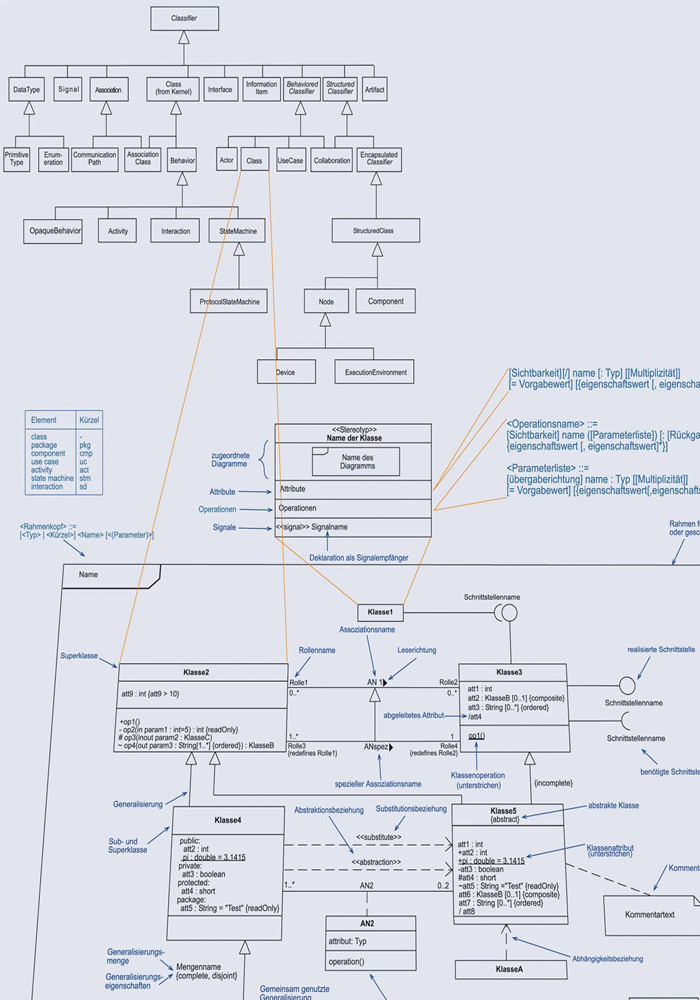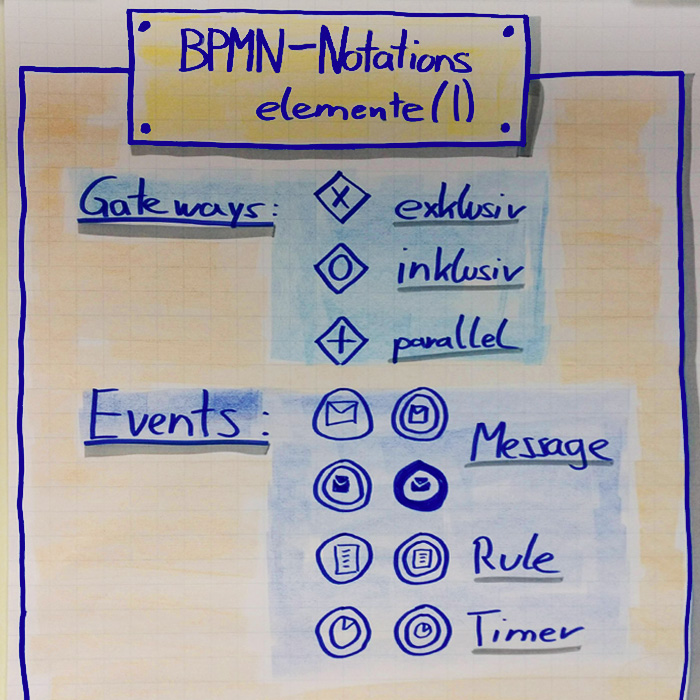Modeling is an alternative form of description compared to the pure textual representation of requirements. It represents facts in images or diagrams. With modeling, the form of representation does not predetermine a certain procedure and is therefore independent from the disciplines analysis, design and test, as well as from a classical or agile approach, such as the V-model or Scrum.
Modeling is more precise than the natural language. It assumes, however, that the modeler and the reader know and can apply the modeling language. The most used modeling languages are UML (Unified Modeling Language), SysML (System Modeling Language) and BPMN (Business Process Modeling Notation). Modeling languages are very powerful. But not everything can be represented with them. Every now and then, textual descriptions have to be used as a supplement to the models. To apply modeling in practice, specialized requirements modeling tools are usually required.

UML is a modeling language standardized by the OMG (Object Management Group). It provides a notation to represent the structure and behavior of systems. To document the structure and behavior of a system, the UML 2 offers altogether 14 different diagrams:
Our Tipp: in our Wissen-for-free-Sektion you have the ability to either download or order the UML2 poster!
SysML is a very extensive profile of the UML. It has taken over some diagrams of the UML, extended them and also added completely new diagrams. Since UML was rather intended for software-oriented systems, SysML shall support the hardware sector better. The diagrams of SysML are:

BPMN is a notation and intended to represent business processes. It does not offer representationsfor structures like the other notations, since it is intended for processes only. BPMN does not provide a range of diagrams, but only the business process diagram with standardized graphical elements, which are clustered in Flow Objects, Connecting Objects, Pools & Swimlanes and Artifacts.
The introduction of modeling is a project as well and, like any other project, it can fail, if there is not a suitable implementation strategy. When introducing modeling you should be especially aware that a lot of participants have to learn the new modeling language in order to be able to utilize its full potential. A suitable modeling tool is also needed for the effective use of modeling. It is therefore worthwhile to invest in advance planning, selection of the team and definition of the work packages, in order to develop a successful marketing and knowledge transfer concept and select suitable pilots.
If you have any questions to the consulting and project work of SOPHIST, we are at your disposal: from the organization and preparation to implementation and follow-up. We will be happy to help you.
Copyright 2018
Do you need more information?
Just give us a Call and let us direct you to the right contact person?
Tel: +49 (0)9 11 40 90 00
E-Mail: heureka[at]sophist[dot]de
Our office hours: Monday to Thursday: Friday:
08:00 - 12:00 Uhr 08:00 - 12:00 Uhr
13:00 - 18:00 Uhr 13:00 - 17:00 Uhr
Of course you are also welcome to reach various departments directly by e-mail:
All about trainings, projects or consulting activities:
All about our job offers and your career opportunities at SOPHIST:
DeineZukunft[at]sophist[dot]de
All about our events, marketing activities and publications:
You might also be interested in these topics: